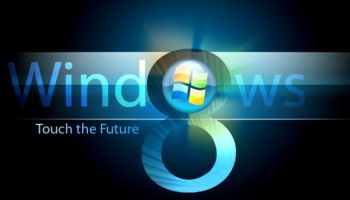

Microsoft’s forthcoming Windows 8 operating system will apparently include a revamped boot experience.
“With continued innovation in the hardware ecosystem, the biggest shift in firmware in 30 years, and software changes leading to boot times of ~7 seconds on machines with solid-state drives (SSDs), we decided it was time to bring the PC boot user experience into the 21st century,” Billie Sue Chafins, a program manager on the Windows team, wrote in a 20 September posting on the “Building Windows 8” blog.
The coming prevalence of Windows 8 on tablets, she added, meant that “we need to deliver a boot experience that is designed for touch, but works just as well for mouse and keyboard.” It also meant making the setup process accessible via a virtual keyboard.
For those power users running a dual-boot scenario, the Windows team has designed a touch-friendly interface for selecting which operating system to boot and which to use as a default OS. They can also select from options such as changing the timer, and trouble-shoot if need be.
Microsoft is also keeping the famous (or infamous, rather) Blue Screen of Death. However, they’ve also inserted a significant element of cuteness into what’s arguably most people’s least-favourite Windows element: a frowny-face emoticon now accompanies a note that reads: “Your PC ran into a problem that it couldn’t handle, and now it needs to restart.”
Microsoft is counting on Windows 8, which will reportedly debut sometime in 2012, to both retain its dominance of the traditional PC market and make inroads into the tablet category currently dominated by the Apple iPad.
Windows 8 will run on traditional PCs and tablets, and support both x86 and ARM architecture.
Microsoft executives have spent considerable time over the past few weeks trumpeting Windows 8’s “no compromises” ability to provide both a lightweight mobility experience and the sort of features desired by power users.
During his 13 September BUILD keynote, Windows and Windows Live division President Steven Sinofsky insisted that technology had evolved enough in the three years since Windows 7’s release to justify the creation of a whole new operating system.
He argued that the rise of mobility, particularly in the consumer space, made it essential to build a platform capable of running on tablets.
American space agency prepares for testing of Boeing's Starliner, to ensure it has two space…
As UK and Europe develop closer military ties, European Commission says it will invest €1.3…
Zuckerberg seeks to revive Facebook's original spirit, as Meta launches Facebook Friends tab, so users…
Notable development for Meta, after appeal against 2021 WhatsApp privacy fine is backed by advisor…
First sign of shake-up under new CEO Lip-Bu Tan? Three Intel board members confirm they…
Trump's nominee for SEC Chairman, Paul Atkins, has pledged a “rational, coherent, and principled approach”…